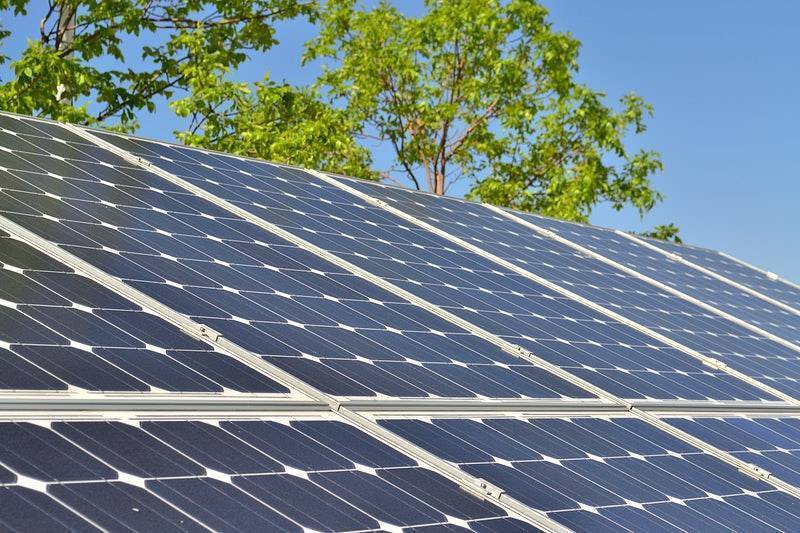We’re in a golden age of solar energy, with incentives, well-priced panels, and the potential to bank your rays. Let’s shine a light on what you should know.
Whether you’re motivated out of concern for the environment or just want to keep your “utilities” money in your pocket, solar panels are increasingly top of mind, if not yet top of roof.
But lots of us have questions, in part, says Sean Buckley, owner of Harvest Sun Solar on Martha's Vineyard, because we don’t trust that solar will live up to the hype. But those in the know insist that solar really is the harbinger of a bright power future.
So where do I start?
Talk to people who already have solar, urges Sean Buckley. “You’ll be absolutely convinced.” And talk to at least a couple of solar contractors. “Make sure that they are transparent, that they answer all your questions in full, and that they look at your specific house and tell you what it will look like, what it will cost, and exactly what it will bring you in revenue.”
Is it expensive?
Buckley says that if you can borrow or spend about the equivalent of five years of your utility bills, then you can afford panels. And they’ll give you about another quarter century of “free” power.
Are there incentives?
Yes! Loads of them, thanks to all tiers of government wanting to move us toward a clean energy future and, most recently, the passing of the Inflation Reduction Act, which offers homeowners a 30% tax credit for the installation of solar panels. Both Buckley and Rob Meyers, co-owner of South Mountain Co., also on Martha's Vineyard, point us to DSIRE where you click on your state and see the long list of potential programs.
What if my roof doesn’t face south?
It used to be that, unless your roof had a south-facing pitch, solar wasn’t a good fit. But that’s no longer the case (if it ever actually was true), says Buckley, who insists that just about everybody is a candidate for solar. There is one exception, he says. Some people have houses oriented perfectly for solar but refuse to cut down any trees. If your roof, no matter which way it faces, is too shaded, then your panels won’t be able to soak up the sun’s rays. “If you knock that tree down,” he says, “you’re gonna see that the tree behind it is pretty too.”
Do I need a new roof?
That depends on how old your roof is now. Solar panels last up to 30 years. So if you have less than about a decade left in the life of your roof, Buckley, for one won’t put panels on top and, he says, the building department wouldn’t let him anyway. If your roof is a bit newer — say you’ve got 15 years left on it — Buckley recommends keeping it. Talk to your solar installer and get their advice on whether your roof is a keeper, at least for now. When you do need to replace your roof, taking the panels off and replacing them over a new roof is pretty simple, he says. “The big deal is pulling the permits, doing the planning, getting the permissions, doing the design, getting the electrical work done, getting the inspection. … That’s where the money goes.”
Can I lose money?
It’s possible, but rare if you have a system that was designed to meet your energy needs. Just don’t become too giddy with your “free” power and start squandering it by blasting the AC with windows wide open. Even so, you’re not really “losing” money so much as “spending” it.
How much maintenance do solar panels require?
Good news! For one thing, any dust or pollen that accumulates has a negligible effect on your panels’ ability to work. You can pretty much ignore your panels and let them do their thing. Even a blizzard won’t leave your panels covered for long as snow slips off easily. A flat roof might require the occasional sweep but otherwise, even a shallow pitch of 10–15% will generally leave your panels free to soak up the sun.
Full disclosure: After writing this Q and A, writer Leslie Garrett used Harvest Sun Solar to install the panels on her home on Martha's Vineyard. One of her favorite things to do is obsessively view the SolarEdge app, which shows her panels passively collecting energy from the sun. One of her other favorite things to do is see her energy bill come in at $0.00 owing.



Dear Dot,
I have been thinking about going solar. Apart from technical and expense questions, I was reading that most solar panel are produced in Xinjiang province, China, often with forced labor. I put on the brakes and wondered, Can I even find panels that aren’t made in China? The US has sanctioned products from Xijiang because 1.8 million Ughurs are political prisoners, but products can slip through by going to another country first. Hard to know what to do…Thanks.